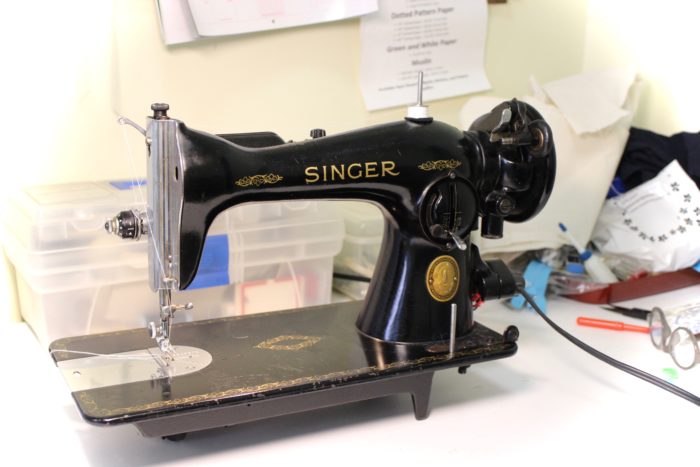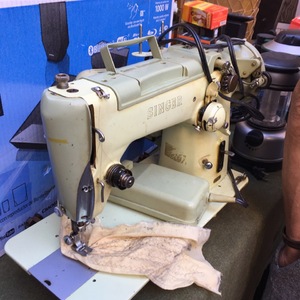Vintage Sewing Machines Were Built to Last a Lifetime
These all-metal mechanical classics just don't quit.
When I started sewing, one of my first sewing friends had a passion for vintage sewing machines. It was he who introduced me to the virtues of sewing on older machines. The majority were all-metal, fully mechanical (as opposed to computerized), and weighed more—sometimes much more—than 20 pounds. Most were straight-stitch machines, designed before the introduction of the now-ubiquitous zigzag. They were also easy to maintain: regular oiling with sewing machine oil, a little de-linting, and they were good to go.

The virtues of vintage
I purchased my first vintage sewing machine, an early 1980s all-metal Kenmore, on eBay. It would be the first of dozens of machines I’ve bought, and sold, since then. If there is one shared virtue of these vintage machines, it is that they were built to last generations. This was due to the materials used in their construction, the simplicity of their mechanics (i.e., no motherboards to fry) and, perhaps most importantly, the values of the era in which they were created, before the concept of “planned obsolescence.”
In the first half of the 20th century, when home sewing machines became common, a sewing machine was a big investment. Sewing was a woman’s contribution to the home economy: She sewed largely to save money on clothes and home furnishings. Sewing machines were expensive tools and as such, were expected to last. And last they did, passed down from generation to generation.
I’ve discovered that many home sewers share my passion for vintage all-metal machines. From their brilliant design to the quality of their construction, from their ease of maintenance to the perfectly balanced stitches they create, these machines are a piece of the past that continues to make a contribution today.
My favorite vintage machine models
Elna Grasshopper

The Elna…
Start your 14-day FREE trial to access this story.
Start your FREE trial today and get instant access to this article plus access to all Threads Insider content.
Start Your Free TrialAlready an Insider? Log in


































I have a Singer 66 treadle, a Singer 401k electrical and a Bernina 1120 from the '80s. Each one in my opinion delivers far superior results to modern machines at a fraction of the cost. Plus the treadle especially is so much fun to use!! I had it sitting as an ornament for four years before I used it - Duh!! Perfect for denim and coat fabrics. More people should look seriously at vintage machines, they sew brilliantly.
I learned to sew on my Mother’s Singer 99K from 1953. It ismy favorite machine I’ll never part with it.
Love, love, love my vintage machines! I am so fortunate to have my Mother’s Singer Featherweight, which I learned to sew on as a young girl. I do own a modern machine for the extras it offers, but find I rarely use it and prefer my VSM’s instead!
Great article. As much as I cannot imagine living without a computer, I have never purchased a computerized sewing machine. My old mechanical sewing machines have served me quite well for many years with very minimal maintenance. Everyone in our family learned to sew on our mother's Singer and one of my sister's actually still uses it even though she has a variety of computerized machines.
Thanks, Peter. I've read your other articles on vintage sewing machines in Male Pattern Boldness (a life-changing discovery for me) and have become equally addicted to collecting these beauties. Luckily, I have limited space in my studio, but I manage to fit them in somehow. I especially love the Singer 15-91 and the Singer 201. Nothing can compare with the sweet sound that they make when I work with them. My modern plastic machines sound so clunky in comparison.